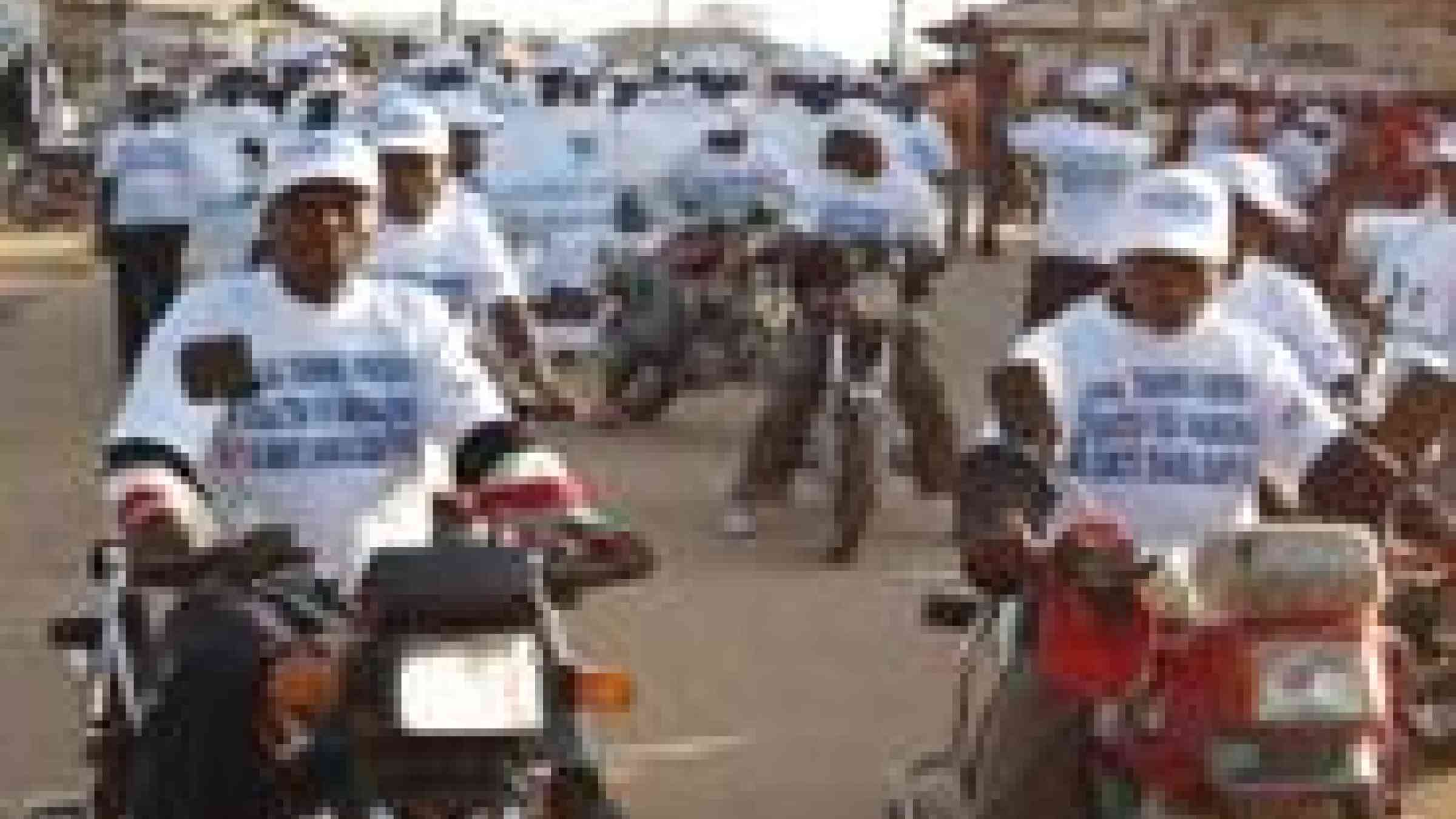UNDP supports the government of Liberia in launching the 'Making Cities Resilient campaign'

Monrovia, Liberia: On December 6, 2012, in Sanniquelle, Nimba County, the “Making Cities Resilient Campaign” was launched by Mr. Ranney Jackson, Deputy Minister for Operations at the Ministry of Internal Affairs (MIA) and also Head of the National Disaster Relief Commission (NDRC). Minister Jackson called on the National Government, local governments, international, regional and civil society organizations, donors, the private sector, academia and professional associations as well as all citizens to be partners in the campaign to build disaster resilient cities.
Minister Jackson at the launch indicated that the Making Cities Resilient Campaign addresses the issues of local governance and urban risks management. He stated that the Campaign drew upon previous United Nations International Strategy for Disasters Reduction (UNISDR) campaigns on safe schools and hospitals, as well as the sustainable urbanization principles developed in UN-Habitat World Urban Campaign that had been running for the last three years (since 2009) and is expected to come to an end by 2013. Minister Jackson said that communities are faced with the threat of disasters on a daily basis and local government officials need better access to policies and tools that will help them effectively deal with disaster issues.
Building the resilience of individuals and communities to disaster according to Minister Jackson, offers solutions for local governments and actors to manage and reduce urban risks. “Urban risk reduction provides opportunities for capital investments through infrastructure upgrades and improvements, building retrofits for energy efficiency and safety, urban renovation and renewal, cleaner energies, and slum upgrading” he added.
It can be recalled that in 2008 UNDP received US$940K from the Bureau of Crisis Prevention and Recovery (BCPR) to support the Government of Liberia strengthen its capacity aimed at addressing issues related to disasters risk reduction. Since then UNDP has supported the Government in creating awareness across the nation on the importance of taking measures to either prevent or mitigate the impacts of disasters, providing both technical and financial support in the drafting of a national policy on disaster risk management; conducting capacity assessment to identify capacity gaps that exist at the national and sub-national levels for the development of an action plan that addresses these capacity gaps. The current regional training event at which time the “making cities resilient campaign” was launched is one of those activities that have created more awareness on disaster risk management and climate change issues across the country.
In a related development, stakeholders from the central region of Liberia along with the UN systems and other partners observed the 2012 International Day for Disasters Reduction (IDDR) in Sanniquellie with a series of events. The day began with a grand parade and was followed by an indoor program where key messages from the UN Secretary General, Ban Kin Moon and the Government of Liberia were delivered. The key message for the 2012 IDDR highlighted the need for women and girls to be at the forefront of reducing risks and managing the local responses to natural hazards including those that are climate induced.
At the end of the event, participants called on Government to endorse the Disaster Risk Management Policy, now before the Minister of Internal Affairs. The Policy calls for the establishment of an autonomous National Disaster Management Agency among other measures to address disaster management.